CHAPTER 3 - WWII JAPANESE FIELD ORGANIZATIONS - SECTION 2

8. DIVISION SIGNAL UNIT.
a. General. the division signal unit, commanded by a captain, is composed of a headquarters, two wire (line or L/T) platoons, one radio (wireless or W/T) platoon, and a material (equipment) platoon. Its strength is about 250 officers and enlisted men.
b. Organizations.
c. Equipment. The approximate total of signal equipment in the unit is 32 telephones, 30 miles of insulated wire, 2 radio sets (ground to air), and 8 to 10 radios. The unit also utilizes pigeons, dogs, helio lamps, semaphores, and ground panels, as well as plane pickups. Some personnel are armed with rifles.
9. THE INFANTRY GROUP.
a. General. The infantry group is commanded by a major general and consists of headquarters, an infantry group signal unit (only in the strengthened division), and three infantry regiments. In some instances, tankette companies , of 80 to 120men with 10 to 17 tankettes, have been assigned to the infantry group.
b. Infantry group headquarters. The headquarters, composed of 70 to 100 officers and men, is divided into an administrative staff, a headquarters guard (equipped with automatic weapons) and a small field (baggage) section. In the standard division a small signal unit may be furnished from the division signal unit.
c. Infantry group signal unit. Found only in the strengthened divisions, this unit usually is commended by a captain and is divided into a company headquarters, a wire (line or L/T) platoon, and a radio (wireless or W/T) platoon, the strength is about 115 officers and enlisted men.
Strength analysis - Personnel.
| DESCRIPTION | STRENGTH | INSIGNIA |
| Unit commander - Captain | 1 |  |
| Unit headquarters | 17 |  |
| Line (L/T) Platoon | 57 |  |
| Radio (or W/T) Platoon | 40 |  |
| TOTAL | 115 Men |
Strength analysis - Equipment.
Equipment includes an estimated:
| ITEM | QUANTITY | |
| Telephones. | 12 | 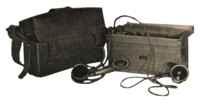 |
| light radio sets. | 5 |  |
| switchboards. | 2 | |
| Horses | 24 | |
| Miles of insulated wire. | 11 | |
| TOTAL | 54 |
d. Infantry group tankette company. These units have been identified in a few divisions. They are believed to beorganized into three or four platoons and a conpany train, with a total of 80 to 120 personnel. They are believed to have 10 to 17 tankettes and trailers. They are used for reconnaissance purposes since divisions in which they are found normally do not have cavalry or reconnaissance regiments. They also may be used for front line transport.
10. THE INFANTRY REGIMENT.
a. General. The regiment is commanded by a colonel and its components are in general;
- Regimental headquarters (including regimental train).
- Regimental signal company.
- Regimental infantry gun unit.
- Regimental antitank gun company.
- 3 infantry battalions.
- A pioneer or labor unit may be added.
b. Tabular strength and equipment tables.
| Units | Personnel | Horses | Rifles | LMG | Grenad discharger | HMG | 37-mm or 47-mm antitank gun | 70-mm battalion gun | 75-mm regimental gun |
| Regimental headquarters (with train) | 176 | 107 | (30) | 1 | ----- | ----- | ----- | ----- | ----- |
| regimental signal company | 132 | 23 | (30) | ----- | ----- | ----- | ----- | ----- | ----- |
| Regimental infantry gun company | 122 | 37 | (20) | ----- | ----- | ----- | ----- | ----- | 4 |
| Regimental antitank company | 116 | 23 | (20) | ----- | ----- | ----- | 6 | ----- | ----- |
| 3 infantry battalion | 3,297 | 483 | (2,031) | 111 | 108 | 36 | ----- | 6 | ----- |
| Each | 1,099 | 161 | (677) | 37 | 36 | 12 | ----- | 2 | ----- |
| Battalion headquarters and train | 147 | 96 | (50) | 1 | ----- | ----- | ----- | ----- | ----- |
| 4 rifle cos (each) | 181 | ----- | 139 | 9 | 9 | ----- | ----- | ----- | ----- |
| 1 nachine gun company | 174 | 45 | (50) | ----- | ----- | 12 | ----- | ----- | ----- |
| 1 battalion gun platoon | 55 | 20 | (20) | ----- | ----- | ----- | ----- | 2 | ----- |
| Total, regimental | 3,843 | (710) | (2,130) | 112 | 108 | 36 | 6 | 6 | 4 |
Figure 20. Standard regiment.
NOTES:
1. Usually regiments operate in the field with only 24 heavy machine guns (HMG).
2. Figures in parentheses are estimates.
The following tables illustrate the two types of the strengthened regiment, as described by the Japanese. The first table illustrates a substantially stronger infantry regiment in which a heavy weapon's platoon has been added to the rifle companies and more infantry guns have been added to the regiment.
| Units | Personnel | Horses | Rifles | LMG | Grenade discharger | HMG | 20-mm antitank gun | 37 or 47-mm antitank gun | 70-mm battalion gun | 75-mm infantry gun |
| Regiment headquarters (with train) | (195) | (140) | (50) | 4 | ( ) | ----- | ----- | ----- | ----- | ----- |
| Regiment signal company | (150) | (25) | (35) | ( ) | ( ) | ----- | ----- | ----- | ----- | ----- |
| Regiment infantry gun battalion | (364) | (55) | (45) | ( ) | ( ) | ----- | ----- | ----- | ----- | 8 |
| Regiment pioneer unit | (100) | (15) | (50) | ( ) | ( ) | ----- | ----- | ----- | ----- | ----- |
| 3 infantry battalions | 4,878 | (846) | 2,190 | 111 | 147 | 36 | 24 | 12 | 12 | ----- |
| Each | 1,626 | (282) | 730 | 37 | 49 | 12 | 8 | 4 | 4 | ----- |
| Battalion headquarter and train | (282) | (150) | 50 | 1 | 1 | ----- | ----- | ----- | ----- | ----- |
| 4 rifle Companies (each) | 262 | (17) | 150 | 9 | 12 | 2 | 2 | ----- | ----- | ----- |
| 1 MG Company (4 guns) | (73) | (12) | ( ) | ----- | ----- | 4 | ----- | ----- | ----- | ----- |
| 1 AT Company | (100) | (18) | ( ) | ----- | ----- | ----- | ----- | 4 | ----- | ----- |
| 1 Battalion gun company | (122) | (24) | ( ) | ----- | ----- | ----- | ----- | ----- | 4 | ----- |
| Total, regimental | 5,687 | 1,083 | (2,370) | (115) | (147) | 36 | 24 | 12 | 12 | 8 |
Figure 21. Strengthened regiment.
| Units | Personnel | Horses | Rifles | LMG | Grenade discharger | HMG | 20-mm antitank gun | 37 or 47-mm antitank gun | 70-mm battalion gun | 75-mm infantry gun |
| Regimental headqurters (with train) | (198) | (125) | (50) | (4) | ( ) | ----- | ----- | ----- | ----- | ----- |
| Regimental signal company | (130) | (23) | (30) | ( ) | ( ) | ----- | ----- | ----- | ----- | ----- |
| Regimental infantry gun company | (170) | (42) | (20) | ( ) | ( ) | ----- | ----- | ----- | ----- | 4 |
| Regimental AT company | (130) | (23) | (20) | ( ) | ( ) | ----- | ----- | 6 | ----- | ----- |
| 3 infantry battalions and train | 4,203 | 543 | (2,250) | 111 | 147 | 36 | 24 | ----- | 12 | ----- |
| Each | 1,401 | 181 | (750) | 37 | 49 | 12 | 8 | ----- | 4 | ----- |
| Battalion headquarter and train | (177) | 96 | (50) | (1) | (1) | ----- | ----- | ----- | ----- | ----- |
| 4 rifle companies (each) | 295 | ----- | 150 | 9 | 12 | ----- | ----- | ----- | ----- | ----- |
| 1 Machine Gun company (12 guns) | (174) | (45) | ( ) | ----- | ----- | 12 | ----- | ----- | ----- | ----- |
| 1 battalion gun company | (230) | (40) | ( ) | ----- | ----- | ----- | 8 | ----- | 4 | ----- |
| Total, regimental | 4,831 | 756 | 2,370 | (115) | (147) | 36 | 24 | 6 | 12 | 4 |
Figure 22. Strengthened - modified - regiment.

C. Infantry Regimental Headquarters.
(1) General. The infantry regimental headquarters normally is composed of about 55 officers and enlisted men. It consists of a staff, made up of administration, code and intelligence, ordnance, and intendance sections. In addition there is an antiaircraft section, or headquarters guard, and a color guard. Total strength of headquarters with train is about 176 officers and enlisted men.
(2) Strength analysis.
(a) Officer personnel.
| DESCRIPTION | STRENGTH | INSIGNIA |
| Regimental commander - colonel | 1 |  |
| Operations and training officer - Major | 1 |  |
| Adjutant - major or colonel | 1 |  or or  |
| color bearer - lieutenant | 1 |  |
| Code and intelligence officer | 1 |  |
| Gas (or smoke) officer | 1 |  |
| Ordnance officer | 1 |  |
| Intendance officer | 1 |  |
| Medical officers | 2 |  |
| Veterinary officer | 1 |  |
| TOTAL | 11 Men |
(Additional officers may be attached).
(b) Administration section.
| DESCRIPTION | STRENGTH | INSIGNIA |
| Sergeant major in charge of personnel records | 1 |  |
| Sergeant major in charge of supply | 1 |  |
| Sergeant major in charge of arms and equipment | 1 |  |
| Sergeant major in charge of orders (liaison) | 1 |  |
| Runners and orderlies | 6 |  |
| Medical orderlies | 2 |  |
| Veterinary orderlies | 2 |  |
| TOTAL | 14 Men |
(c) Code and intelligense section. 2 noncommissioned officers and 8 men.
(d) Ordnance section. 1 ordnance noncommissioned officer and 6 technical noncommissioned officers.
(e) Intendance section. 3 men, including pay noncommissioned officer.
(f) Antiaircraft section or headquarters guard (1 light machine gun). 1 commissioned officer and 4 men.
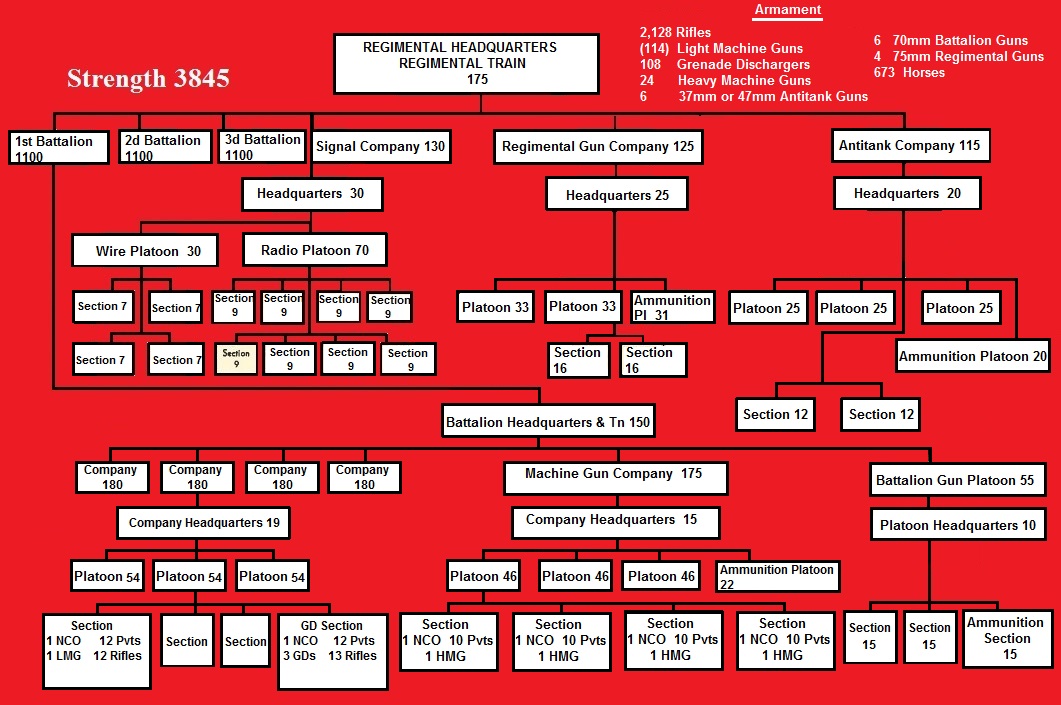
Figure 23. Japanese standard infantry regiment Organizational Chart.
|
(g) Color guard. Five men.
(3) Regimental train. (a) General. The regimental train is divided into a field (baggage) section and an ammunition section. The baggage section usually includes about 30 one-horse, two wheeled transportation carts, or about 40 pack horses. It carries the regimental baggage as well as one day's rations for regimental units not included in battalions. Kitchen equipment normally is carried in the division train, but it may be attached to regiments. Frequently all trains of all regimental units are grouped in one body. The ammunition train, equipped with horses and two-wheeled transport carts, carries a day's unit of fire for the regiment. (b) Strength analysis.
|
(c) Size of the regimental train will vary. If motorized, the train will be reduced in most cases.

d. Regimental pioneer (labor) unit.
The type "A" organization definetely includes in its establishment a regimeental pioneer unit of set conposition. This consists of a commander, 6 sections, and a material section. It numbers from 100 ro 200 men, and its duties consist of general construction work. When "B" class divisions are moved into areas where personnel are required for demolition work, road construction, etc., a labor unit, consisting of four or five sections, can be drawn from the infantry companies and augmented by a few engineers. While a regimental labor company, with a strength as high as 250, may be found in any division, this does not necessarily involve any increase in the strength of the regiments.

e. Regimental signal company.
(1) General.
The signal company consists of a headquarters, one wire (Line or L/T) platoon, and one radio (wireless or W/T) platoon, with a total of about 132 officers and men.
(2) Organization.

Figure 24.
WWII Japanese company headquarters flowchart.
|
The number of radios sets used in comparison with the number L/T sets will depend on the type of operations involved.
(3) Strength analysis. (a) Company commander -
(b) Company headquarters (command section). The total strength of Sections 1 and 2 consists of 29 men. 1. Administration section.
|
2. Runner (liaison) section.
The total strength of this Section consists of 19 men.
| DESCRIPTION | STRENGTH | INSIGNIA |
| Warrant officer | 1 |  |
| Enlisted men | 18 |  |
| TOTAL | 19 Men |
(c) No. 1 Platoon (Wire or L/T).
The total strength consists of Twenty nine men.
| DESCRIPTION | STRENGTH | INSIGNIA |
| Platoon commander - Lieutenant | 1` |  |
| 4 wire sections | ||
| noncommissioned officer | 1 x 4 = 4 |  |
| Enlisted men per section | 6 x 4 = 24 |  |
| TOTAL | 29 Men |
(d) No. 2 Platoon (radio or W/T).
The total strength consists of Seventy three officers and enlisted men.
| DESCRIPTION | STRENGTH | INSIGNIA |
| Platoon commander - Lieutenant. | 1 |  |
| 8 radio sections | ||
| Noncommissioned officer | 1 x 8 = 8 |  |
| 8 Enlisted men per section | 8 x 8 = 64 |  |
| TOTAL | 73 Men |
(4) Equipment
The approximate signal equipment in the company is as follows:
| 1 | - 12 to 20 telephone sets. |  |
| 2 | - 11 to 30 miles of insulated wire. |  |
| 3 | - 3 to 5 light radio sets. |  |
| 4 | - 2 to 3 ground to air sets. |  |
| 5 | - Ground to air panels. | |
| 6 | - Dog sections. | |
| 7 | - Pigeons sections. | |
| 8 | - Hekiograph. | |
| 9 | - Other usual signal equipment. |

f. Regimental infantry gun company.
(1) General. The company consists of a headquarters, a firing unit of 2 platoons (total of 4 guns), and an ammunition platoon. The total strength is 122 officers and enlisted men.
(2) Organization
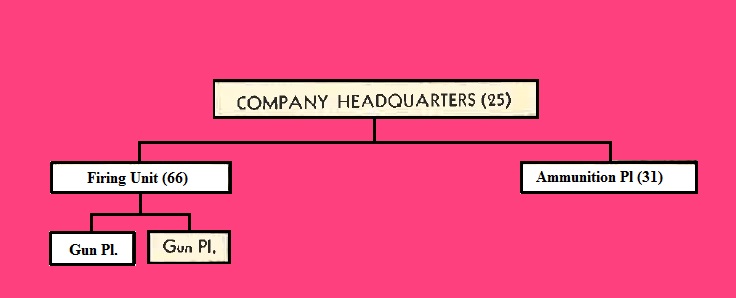
Figure 25 WWII Japanese Regimental Infantry Gun Company organizational chart.
(3) Strength analysis.
(a) Company commander: Captain.
(b) Ordnance officer: Captain.
(c) Company headquarters (command section): Twenty three men.
1. Administration section.
The Administration Section is composed of the following members.
| DESCRIPTION | STRENGTH | INSIGNIA |
| Sergeant major in charge of personnel records | 1 |  |
| Noncommissioned officer in charge of supplies | 1 |  |
| Charge of weapons and equipment | 1 |  |
| Runners and orderlies | 6 |  |
| Medical orderlies | 2 |  |
| TOTAL | 11 Men |
2. Signal section.
The signal Section is composed of the following members.
| DESCRIPTION | STRENGTH | INSIGNIA |
| Noncommissioned officer | 1 |  |
| Enlisted men | 6 |  |
| TOTAL | 7 Men |
3. Observation section.
The Observation Section is composed of the following members.
| DESCRIPTION | STRENGTH | INSIGNIA |
| Noncommissioned officer | 1 |  |
| Enlisted men | 4 |  |
| TOTAL | 5 Men |
(d) Firing unit (two platoons, each 33 Nos. 1 and 2 gun platoons.
- Platoon commander - lieutenant.
- 2 gun sections (noncommissioned officer and 15 men per section).
(e) Ammunition platoon. 31 men.
(f) Regimental infantry gun company. Total - 122 men.
(5) The armamanment of the rgimental gun company often has been found to consist of two regimental guns and two antitank guns, instead of the standard four 75-mm regimental infantry guns, At times mortars (probably the short barreled 81-mm) may be substituted or included.


g. Regimental infantry gun battalion.
(1) General. The battalion consists of a small headquarters group of 24 officers and enlisted men and 2 "A" type gun companies. The company comprisesd a firing unit of 2 platoons (total of four guns) and an ammunition platoon. The strength of the company is 170, and the total strength of the battalion is 364 officers and enlisted men.
(2) Organization.

Figure 26. WWII Japanese battalion headquarters Organizational Chart.
(3) Strength analysis of "A" type gun company.
(a) Company commander. Major or captain.
(b) Ordnance officer. Captain.
(c) Company headquarters (commande section). 27 men,
1. Administration section.
| DESCRIPTION | STRENGTH | INSIGNIA |
| Warrant officer in charge of personnel | 1 |  |
| Sergeant major in charge of personnel records | 1 |  |
| Noncommissioned officer in charge of supply | 1 |  |
| Noncommissioned officer in charge of weapons and equipment | 1 |  |
| Runners and orderlies (1 mounted) | 3 |  |
| Medical orderlies | 2 |  |
| TOTAL | 9 Men |
2. Signal section.
| DESCRIPTION | STRENGTH | INSIGNIA |
| Noncommissioned officer | 1 |  |
| Enlisted men | 6 |  |
| TOTAL | 7 Men |
3. Observation section.
| DESCRIPTION | STRENGTH | INSIGNIA |
| Noncommissioned officer | 1 |  |
| Enlisted men | 10 |  |
| TOTAL | 11 Men |
(d) Firing unit (two gun platoons, each 55 men). Nos. 1 and 2 gun platoons.
- Platoon commander - lieutenant --------------------------------- 1
- 2 gun sections (noncommissioned officer and 26 men) ------- 54
(e) Ammunition platoon. 31 men.
(4) Equipment. Four 75-mm regimental infantry guns.

h. Regimental antitank company.
(1) General The regimental antitank company consists of a headquarters, a firing unit of 3 platoons, and an ammunition platoon. The total strength is about 115 officers and enlisted men equipped with six antitank guns.
(2) Organization.
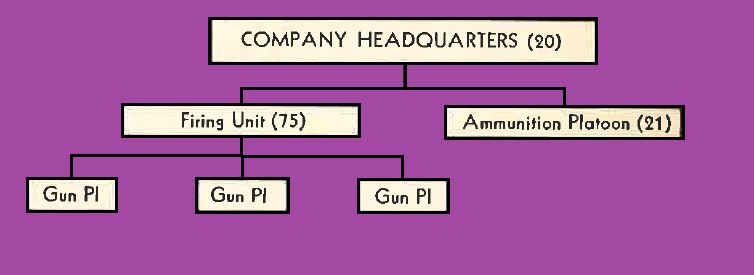
Figure 27. WWII Japanese Regimental Antitank Company Organizational Chart
(3) Strength analysis.
(a) Company commander - Captain.
(b) Company headquarters (command section) - 19 men.
1. Administration section.
| DESCRIPTION | STRENGTH | INSIGNIA |
| Sergeant major in charge of personnel records | 1 |  |
| Noncommissioned officer in charge of supply | 1 |  |
| Noncommissioned officer in charge of arms and equipment | 1 |  |
| Runners and orderlies | 7 |  |
| Medical orderlies | 2 |  |
| TOTAL | 12 Men |
2. Obervation section.
The Observation Section consists of the following members:
| DESCRIPTION | STRENGTH | INSIGNIA |
| Noncommissioned officer in charge of supply | 1 |  |
| Enlisted men | 6 |  |
| TOTAL | 7 Men |
(c) Firing unit (three gun platoons, each 25). No. 1 gun platoon (Nos. 2 and 3 platoons the sme).
- Platoon commander - lieutenant ---------------------------------- 1
- 2 gun sections (noncommissioned officer and 11 men) -------- 24
(d) Ammunition platoon. 21 men.
(4) Equipment. Six 37-mm antitank guns.
(5) A common variant is for this unit to be merged with the regimental infantry gun unit, the armament of which then consists of 2 regimental guns and 2 antitank guns.
(6) The "A" type antitank gun company has increased strength of about 130 officers and enlisted men and is equipped with six 37-mm antitank guns. In the strengthened type division the antitank company is not a regimental unit, but there are 3 antitank companies, one in each infantry battalion, and each company usually is equipped with 4 antitank guns. The strength of this 4 gun company is approximately 100 officers and enlisted men.
i. Infantry battalion (standard).
(1) General. The infantry battalion normally is commanded by a major and cosists of a headquarters and train, 4 rifle companies, and a machine gun company, and a battalion gun platoon. Its total strength is 1,100 officers and enlisted men.
(2) Organization.

Figure 28. WWII Japanese Infantry Battalion Organizational Chart.
(3) Equipment.
There are approximately 677 rifles, 36 grenade dischargers, 37 light machine guns, 12 (8) heavy machine guns (7.7-mm), 2 batallion 70-mm guns.
j. Infantry battalion (strengthened).
(1) General.
This infantry battalion normally os commanded by a major and consists of a headquarters adn train, 4 rifle companies, a machine gun company, a battalion gun company, and a battalion antitank company. Its total strength is 1.626 officers and enlisted men.
(2) Organization.

Figure 29. WWII Japanese Strengthened Infantry Battalion Organizational Chart.
(3) Equipment.
k. Infantry battalion (strengthened, modified).
(1) General.
This infantry battalion is normally commanded by a major and consists of a headquarters and train, 4 rifle companies, a machine gun company, and a batalion gun company. Its total strength is 1,401 officers and enlisted men.
(2) Organization.

Figure 30. WWII Japanese Strengthened & Modified Infantry Battalion Organizational Chart.
(3) Equipment.
There are approximately 750 rifles, 37 light machine guns, 49 grenade dischargers, 12 heavy machine guns (7.7-mm), eight 20-mm antitank rifles, and four 70-mm battalion guns.
l. Battalion headquarters.
(1) General.
The battalion headquarters normally consists of about 37 officers and enlisted men, divided into administration, ordnance and intendance, liaison, code and intelligence, and an antiaircraft, or headquarters guard, sections. In addition there is a battalion train. Total strength of battalion headquarters and train is 147 officers and enlisted men.
(2) Strength analysis.
(a) Officer personnel. 8 men.
| DESCRIPTION | STRENGTH | INSIGNIA |
| Battalion commander - major | 1 |  |
| Adjutant - captain or lieutenant | 1 |  or or  |
| Ordnance officer | 1 |  |
| Intendence officer | 1 |  |
| Medical officers | 3 |  |
| veterinary officer | 1 |  |
| TOTAL | 8 Men |
(Additional officers may be attached)
(b) Administration section. 14 men.
| DESCRIPTION | STRENGTH | INSIGNIA |
| Sergeant major in charge of personnel | 1 |  |
| Sergeant major in charge of supplies | 1 |  |
| Sergeant major in charge of arms and equipment | 1 |  |
| Sergean major in charge of orders (liaison) | 1 |  |
| Runners and orderlies | 5 |  |
| Medical orderlies | 4 |  |
| Veterinary orderly | 1 |  |
| TOTAL | 14 Men |
(c) Ordnance and intendence section. Two noncommissioned officers and one technician.
(d) Liaison section. 4 men.
(e) Code and intelligence section. One noncommissioned officer and two men.
(f) AA section or headquarters guard (1 LMG). 5 men.
(3) Battalion train. The battalion train is generally similar in equipment and function to the regimental train.
(a) Field (baggage) section. Noncommissioned officer and 49 men.
(b) Ammunition section. Noncommissioned officer and 59 men.
(c) Battalion train - 110 men.
NOTE. Strength of the battalion train may vary. If motor transport is used it will normally be reduced.
m. Infantry rifle company ("B") type.
(1) General. The company consists of a company commander, usually a captain, a company headquarters, and three rifle platoons. Total strength is 181 officers and enlisted men.
(2) Organization.
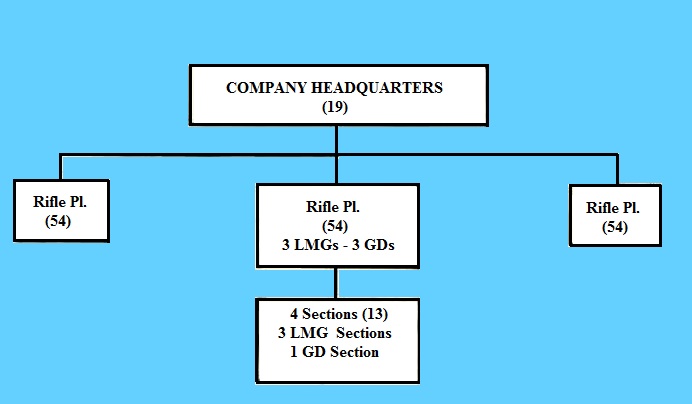
Figure 31. WWII Japanese Infantry Rifle Company organizational Chart. |
(3) Strength analysis.
(a) Company commander. - Captain.
(b) Company headquarters (command section).
| DESCRIPTION | STRENGTH | INSIGNIA |
| Warrant officer in charge of personnel | 1 |  |
| Sergeant major in chareg of personnel records | 1 |  |
| Noncommissioned officer in charge of supply | 1 |  |
| Noncommissioned officer in charge of arms and equipment | 1 |  |
| Runners and orderlies (including buglers) | 10 |  |
| Medical Orderlies | 4 |  |
| TOTAL | 18 Men |
(c) Rifle platoons (each 54). - 162 officers and enlisted men.
1. No. 1 platoon.
| DESCRIPTION | STRENGTH | INSIGNIA |
| Platoon commander - lieutenant | 1 |  |
| Liaison noncommissioned officer | 1 |  |
| 3 rifle light machine gun sections (noncommissioned officer and 12 men) | 39 |  and and  |
| 1 grenade discharger section | 13 |  |
| TOTAL | 54 Men |
2. No. 2 and No. 3 platoons. same as No. 1.
(4) Equipment.
There are in the company 139 rifles, nine light machine guns, and nine grenade dischargers.
n. Infantry rifle company ("A" type without heavy weapons platoon)
(1) General. The company consists of a company commander, usually a captain, a company headquarters, and 3 rifle platoons. Total strength is 205 officers and enlistedmen.
(2) Organization.
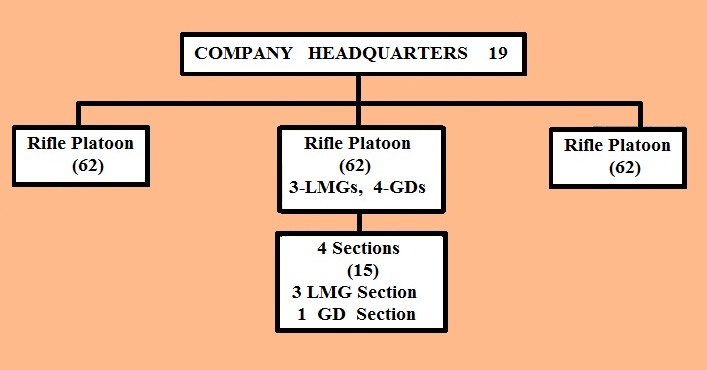
Figure 32. WWII Japanese Infantry rifle company organizational chart.
(3) Strength analysis.
(a) Company commander. - captain or First Lieutenant.
(b) Company headquarters (command section) 18 men.
| DESCRIPTION | STRENGTH | INSIGNIA |
| Warrant officer in charge of personnel | 1 |  |
| Sergeant major in charge of personnel records | 1 |  |
| Noncommissioned officer in charge of supply | 1 |  |
| Noncommissioned officer in charge of arms and equipment | 1 |  |
| Runners and orderlies (including buglers) | 10 |  |
| Medical orderlies | 4 |  |
| TOTAL | 18 Men |
(c) 3 Rifle platoons (each 62). - 186 officers and men.
1. No. 1 Rifle platoon.
| DESCRIPTION | # of INSTANCES | STRENGTH | INSIGNIA |
| Platoon commander | 1 | 1 |  |
| Liaison noncommissioned officer | 1 | 1 |  |
| Rifle-light machine gun sections | 3 (1 NCO and 14 men) | 45 |  and and  |
| 1 grenade discharge section | 1 (noncommissioned officer and 14 men) | 15 |  and and  |
| TOTAL | 62 Men |
2. No.2 and No. 3 rifle platoons. - Same as no. 1.
(4) Equipment. There are in the company 150 rifles, 9 light machine guns, and 12 grenade dischargers.
o. Infantry rifle company ("A" type with heavy weapons platoon).
(1) Genral. The company consists of a company commander, usually a captain, a company headquarters, 3 rifle platoons, a heavy weapons platoon, and an ammunition platoon. Total strength is 262.
(2) Organization.
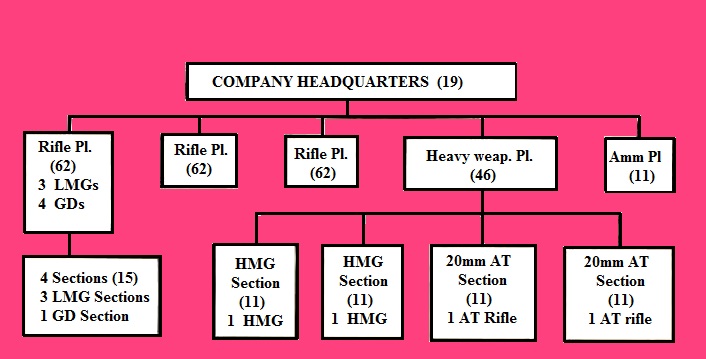
Figure 33. WWII Japanese Heavy Weapons Infantry Rifle Company Organizational Chart.
(3) Strength analysis.
(a) Company headquarters and 3 rifle platoons. 205 officers and men.
(b) Heavy weapons platoon. - 46 officers and men.
| Platoon commander | 1 |
| Liaison noncommissioned officer | 1 |
| 2 heavy machine gun sections (noncommissioned officer and 10 men) (1 7.7-mm heavy machine guns) | 22 |
| 2 antitank rifle sections (noncommissioned officer and 10 men) (2 20-mm antitank rifles) | 22 |
(c) Ammunition platoon. - 11 men.
(4) Equipment.
- 150 rifles.
- 9 light machine guns.
- 12 grenade dischargers.
- 2 heavy machine guns.
- 2 20-mm antitank rifles.
p. Battalion machine gun company (12 gun comnpany)
(1) General. This machine gun company consists of a headquarters, a firing unit of 3 platoons (each having 4 heavy machine guns), and an ammunition platoon. The total strength is 174 officers and enlisted men.
(2) Organization.
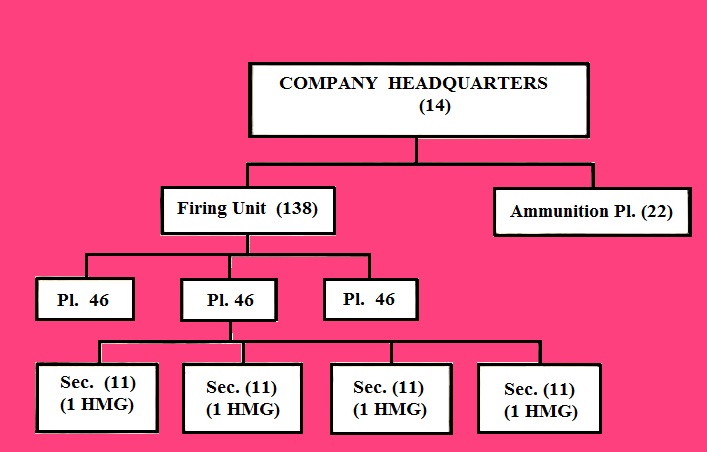
Figure 34. WWII Japanese Battalion Machine Gun Company Organizational Chart
(3) Strength analysis.
(a) Company commander. - Captain or first lieutenant.
(b) Company headquarters (command section). - 13 men.
| DESCRIPTION | STRENGTH | INSIGNIA |
| Warrant officer in charge of personnel | 1 |  |
| Sergeant major in charge of personnel records | 1 |  |
| Noncommissioned officer in charge of supply | 1 |  |
| Noncommissioned officer in charge of arms and equipment | 1 |  |
| Runners and orderlies (including bugler) | 6 |  |
| Medical orderlies | 3 |  |
| TOTAL | 13 Men |
(c) Firing unit (3 platoons, each 46).
1. No.1 Machine gun platoon.
| Platoon commader, first or second lieutenant | 1 |
| liaison noncommissioned officer | 1 |
| 4 gun sections (noncommissioned officer and 10 men) | 44 |
2. No, 2 and No. 3 machine gun platoons . same as No. 1.
(d) Ammunition platoon. 22 men. Noncommissioned officer in charge. 3 sections of 7.
(4) Equipment. The company has twelve 7.7-mm heavy machine guns.
q. Battalion machine gun company (8-gun company).
(1) General. the eight machine gun company consists of a headquarters, a firing unit of 4 platoons (each having 2 heavy machine guns), and an ammunition platoon. The total strength is 144. It is this company which has been met most commonly in recent operations.
(2) Organization.
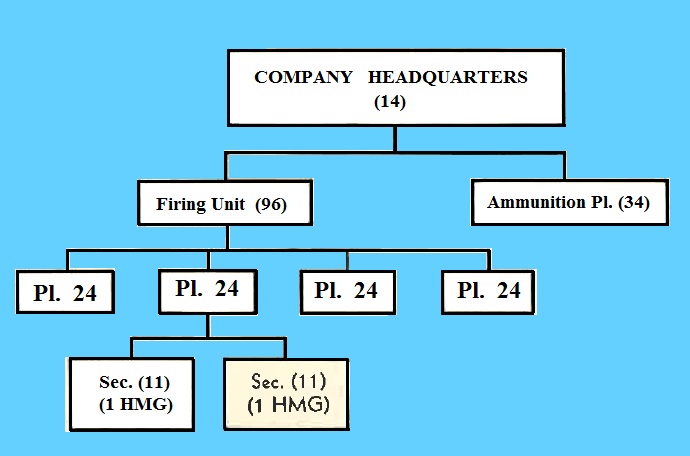
Figure 35. WWII Japanese Battalion Machine Gun Company Organizatioal Chart
r. Battalion machine gun company (4-gun company)
(1) General.
This company has only 4 machine guns; the other 8 of teh normal battalion complement of 12 guns usually have been allocated to the rifle companies and are shown in the rifle companies' strengths. The company consists of a headqurters, 2 gun platoons and a small ammunition platoon. The total strngth is 73.
(2) Organization.
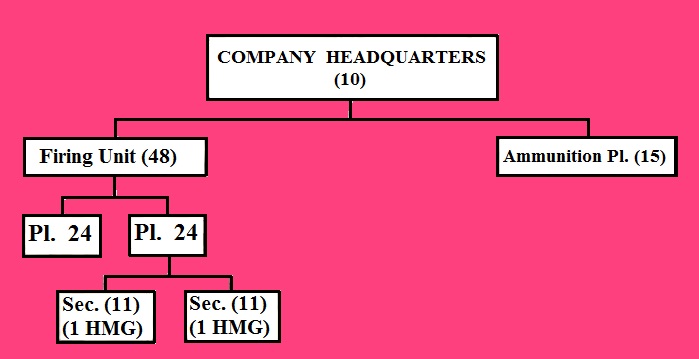
Fugure 36. WWII Japanese Battalion Machine Gun Company
s. Battalion gun platoon.
(1) General.
The battalion gun platoon consists of a headquarters, a firing unit of 2 gun sections, and an ammunition section. Its total strength is 55 officers and enlisted men. It is equipped with two 70-mm battalion guns.
(2) Organization.
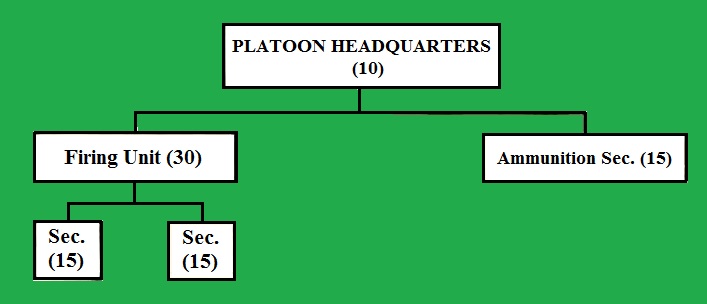
Figure 37 WWII Japanese Battalion Gun Platoon Organizational Chart
(3) Strength analysis.
(a) Company commander. - First or Second lieutenant.
(b) Company headquarters. - Nine men.
| DESCRIPTION | STRENGTH | INSIGNIA |
| Sergeant major in charge of personnel records | 1 |  |
| Noncommissioned officer in charge of arms and equipment | 1 |  |
| Noncommissioned officer in charge of teh observers | 1 |  |
| Runners or orderlies | 5 |  |
| Medical orderly | 1 |  |
| TOTAL | 9 Men |
(c) Firing unit. - 30 men
1. No.1 gun section.
- Noncommissioned officer
- 2 observers
- 12 gunners
2. No.2 gun section. - Same as no. 1.
(d) Ammunition section. - 15 men.
(4) Equipment. - The platoon has two 70-mm battalion guns.
t. Battalion gun company (without antitank rifles).
(1) General. The battalion gun company consists of a headquarters, a firing unit of 2 gun platoons, and an ammunition platoon. Its total strenght is 122.
(2) Organization.
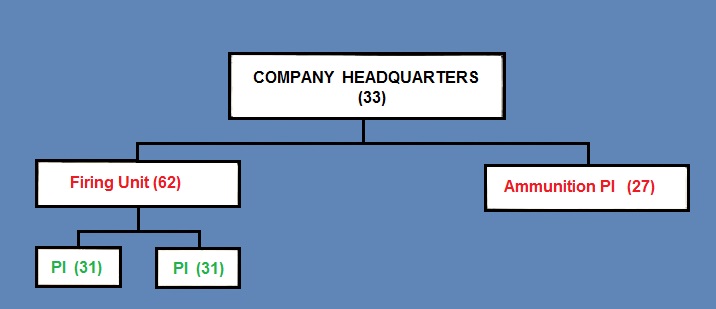
Figure 38. WWII Japanese Battalion Gun Company Organizational Chart.
(3) Strength analysis.
(a) Company commander. - First lieutenant.
(b) Company headquarters (command section). - 32 men
| DESCRIPTION | STRENGTH | INSIGNIA |
| Warrant officer in charge of personnel | 1 |  |
| Sergeant major in charge of personnel records | 1 |  |
| Noncommissioned officer in charge of supply | 1 |  |
| Noncommissioned officer in charge of arms and equipment | 1 |  |
| Noncommissioned officer in charge of liaison | 1 |  |
| Signal section | 9 (Noncommissioned officer and 8 men) |  and and  |
| Runners and orderlies | 5 |  |
| Medical orderlies | 2 |  |
| Obervation section | 11 (Noncommissioned officer and 10 men) |  and and  |
| TOTAL | 32 Men |
(c) Firing unit (Two gun platoons, each 31) - 62
| Platoon commander - first or second lieutenant | 1 |
| 2 gun sections (noncommissioned officer and 14 men) | 30 |
(4) Equipment. - The company has four 70-mm battalion guns.
u. Battalion gun company (with antitank rifles).
(1) General.
The battalion gun company consists of a headqurters, a firing unit of 2 gun platoons armed with 70-mm battalion howitzers, 4 platoons of 20-mm antitank rifles, and an ammunition platoon. Its total strength is about 230.
(2) Organization.
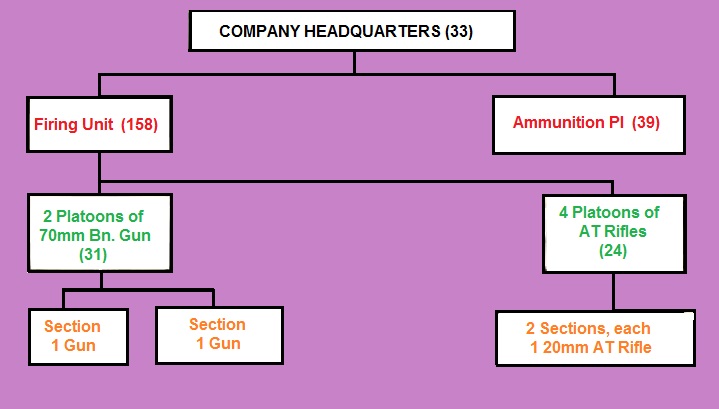
Figure 39. Battalion Gun Company Headquarters with Antitank Rifles Organizational Chart.
(3) Strength analysis.
(a) Company commander. -
(b) Company headquarters. -
(c) Firing unit. - 158 men.
(d) Ammunition platoon. - 39 men.
(4) Equipment.
The company has four 70-mm battalion guns and eight 20-mm antitank rifles.

